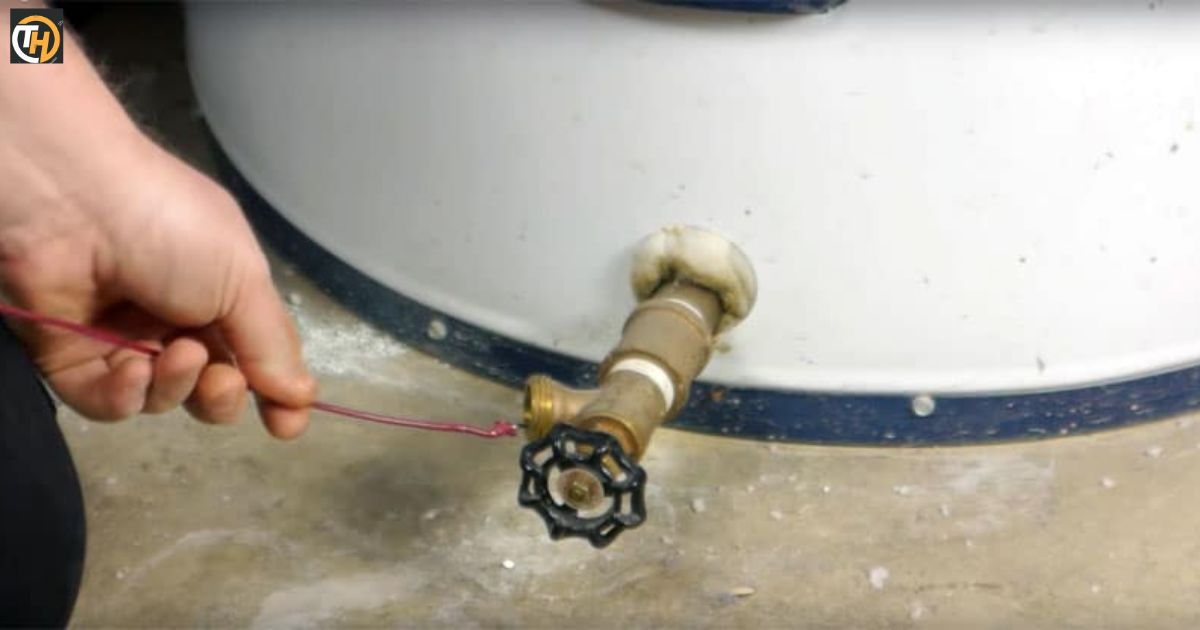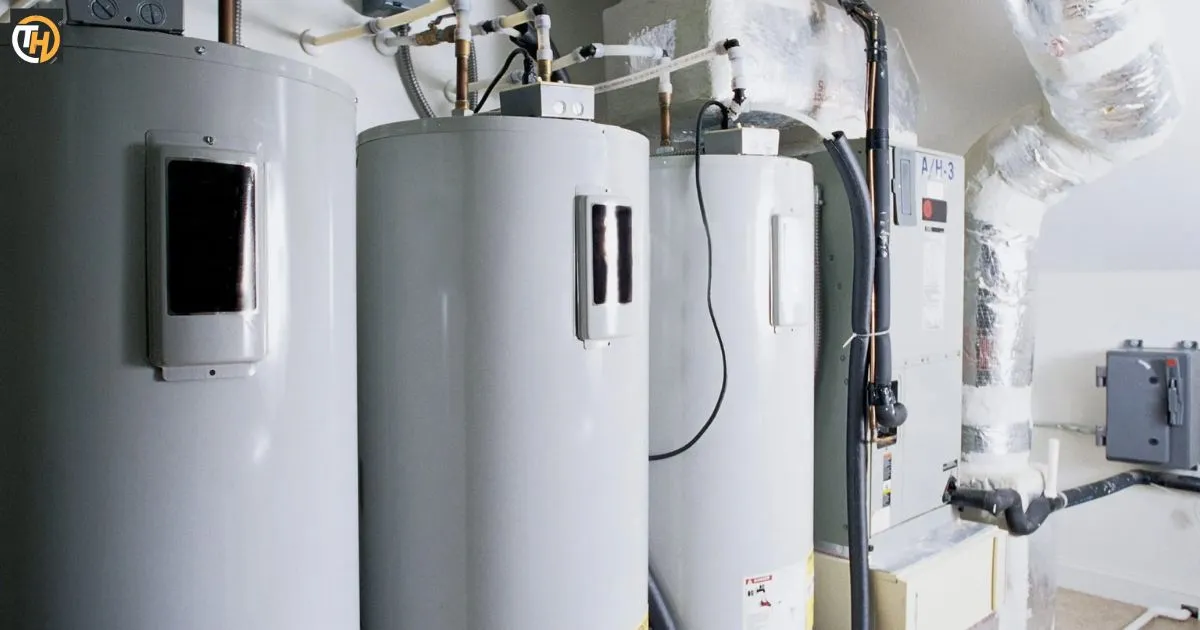A hot water heater, often fueled by electricity, natural gas, propane, or other sources, is a household essential for showers, baths, and dishwashing. Discover the best practices on how to transport a hot water heater on its side to ensure safety and prevent damage during relocation.
Can You Transport A Hot Water Heater On Its Side? This question often arises when individuals need to relocate or install a water heater in a confined space. The transportation of a hot water heater on its side poses a common dilemma, as it may impact the appliance’s functionality and safety.
Transporting a hot water heater on its side requires careful consideration to ensure the appliance’s integrity and efficiency. While some water heaters may be transported horizontally without issues, others may be more sensitive to such positioning. It is crucial to consult the manufacturer’s guidelines and recommendations regarding transportation methods.
Safety Considerations For Transporting Water Heater On Its Side
Ensuring the safety of a water heater during transportation is paramount. When contemplating moving a water heater on its side, it’s crucial to adhere to strict safety considerations. The appliance’s internal components, such as the heating element and pressure relief valve, are designed to function optimally in specific orientations.
Transporting the water heater on its side may lead to potential damage or compromise its safety features. To mitigate risks, follow manufacturer guidelines meticulously, secure the appliance adequately, and be mindful of potential impacts during transit. Prioritizing safety ensures the water heater arrives at its destination intact and ready for efficient operation.
Manufacturer Guidelines For Moving A Water Heater
Manufacturer guidelines for moving a water heater are crucial to ensuring its safe and efficient transportation. These guidelines, provided by the water heater’s manufacturer, offer specific instructions on how to handle and relocate the appliance without compromising its functionality.
They often include recommendations regarding the positioning of the water heater during transport, emphasizing whether it can be safely moved on its side. Following these guidelines is essential to prevent potential damage, maintain warranty validity, and guarantee the water heater’s optimal performance in its new location.
Potential Risks To The Water Heater’s Functionality
Displacement of Internal Components: Transporting a water heater on its side may lead to the shifting of crucial internal elements, such as heating elements and sensors.
Accumulation of Sediment: Tilting the unit can result in the collection of sediment in vital areas, potentially impacting the water heater’s efficiency over time.

Issues with Gas-Powered Heaters: Gas-powered water heaters may face challenges with pilot light or gas valve alignment when laid horizontally during transportation.
Damage to Temperature Controls: The risk of damage to temperature controls exists, which could affect the water heater’s ability to regulate water temperature accurately.
Potential for Leaks: The structural stress from transporting a water heater on its side may increase the likelihood of leaks, posing a threat to both the appliance and its surroundings.
Securing The Water Heater For Horizontal Transportation
Securing the water heater for horizontal transportation is a critical step to prevent potential damage and ensure its safe relocation. Begin by disconnecting and draining the unit to reduce weight and avoid water spillage during transit. Utilize sturdy straps or belts to firmly secure the water heater, preventing it from shifting or tipping over.
Placing the appliance on a padded surface within the transport vehicle adds an extra layer of protection against vibrations and impacts. Pay close attention to the manufacturer’s guidelines regarding securing mechanisms and always use appropriate tools to fasten the water heater securely in its horizontal position.
Impact Of Transporting A Water Heater Incorrectly
- Incorrect transportation of a water heater can lead to internal damage and affect its overall functionality.
- Sharp impacts or improper handling may cause leaks or structural issues within the water heater.
- Components such as the heating element, thermostat, or pressure valve may be compromised if not secured properly during transit.
- The impact of incorrect transportation can result in costly repairs or even the need for a replacement water heater.
- Manufacturer warranties may become void if the water heater is not moved in accordance with specified guidelines.
- To avoid these negative consequences, it is crucial to follow recommended procedures and take necessary precautions during the transportation of a water heater.
Special Considerations For Different Types Of Water Heaters
| Type of Water Heater | Special Considerations |
| Tankless | Ensure proper insulation to prevent damage to internal components during transport. |
| Storage Tank | Empty the tank before moving to reduce weight and minimize the risk of structural damage. |
| Heat Pump | Securely fasten the unit to prevent vibrations that could impact the heat pump’s functionality. |
Considering the unique characteristics of each water heater type is essential for safe and damage-free transportation. Ensure adherence to manufacturer guidelines for the specific model being moved.
Expert Recommendations On Water Heater Transportation
When it comes to moving a water heater, following expert recommendations is crucial for a seamless and risk-free transportation process. Experts advise consulting the manufacturer’s guidelines to understand specific requirements for each water heater model. Securing the appliance properly and adhering to recommended transportation orientations.
Professionals emphasize the importance of avoiding sharp impacts during transit, which could potentially damage critical components. By heeding these expert suggestions, individuals can navigate the challenges of water heater transportation with confidence, minimizing the risk of operational issues and maintaining the appliance’s efficiency.
Tools And Equipment For Safely Moving A Water Heater
Dolly or Hand Truck: Utilize a sturdy dolly or hand truck designed for transporting heavy appliances, ensuring stability and ease of movement.
Moving Straps or Belts: Secure the water heater tightly to the dolly or hand truck using moving straps or belts to prevent shifting during transportation.
Furniture Blankets or Padding: Wrap the water heater in furniture blankets or use padding to protect it from scratches and minor impacts during transit.
Adjustable Wrench or Pliers: Have an adjustable wrench or pliers on hand to disconnect and secure any pipes or fittings before moving the water heater.
Safety Gloves and Goggles: Wear safety gloves and goggles to protect yourself from potential hazards and ensure a safe and injury-free water heater transportation process.
Precautions To Avoid Damaging The Water Heater During Transit
When transporting a water heater, taking precautions to avoid damage is crucial for ensuring its continued functionality. Secure the unit tightly to prevent shifting during transit, minimizing the risk of dents or internal damage. Place padding around the water heater to absorb shocks and protect it from external impacts.
Avoid sharp turns and sudden stops to prevent the appliance from tipping over or sustaining structural damage. If possible, transport the water heater upright, following manufacturer guidelines for safe handling. These simple precautions can go a long way in preserving the integrity of the water heater during transportation.
Ensuring The Water Heater’s Performance After Transportation
- After transporting a water heater on its side, carefully inspect it for any visible damage or irregularities.
- Ensure that all connections, including pipes and electrical wiring, are secure and undamaged.
- Allow the water heater to stand upright for a sufficient period before reconnecting it to the power source.
- Check for any signs of leakage or water damage, both externally and internally.
- Run a test cycle to verify that the water heater is heating water efficiently and without any unusual noises.
- If any issues arise, consult the manufacturer’s troubleshooting guide or seek professional assistance to address potential performance concerns.
FAQ’s
Can transporting a water heater on its side damage the appliance?
Transporting a water heater on its side may lead to damage, affecting its performance and safety.
What precautions should be taken when moving a water heater horizontally?
Secure the water heater properly, follow manufacturer guidelines, and avoid sharp impacts during transit.
Do different types of water heaters have specific transportation considerations?
Yes, various types may have unique sensitivities, so it’s crucial to be aware of specific guidelines for each.
Conclusion
In the end, moving a hot water heater on its side requires careful attention to avoid problems. Following the manufacturer’s guidelines is crucial to keep the water heater safe. Ensuring a smooth relocation and maintaining the water heater’s performance afterward is about taking the right precautions and being aware of potential risks.
So, if you ever find yourself wondering about transporting a water heater horizontally, just make sure to handle it with care and prioritize the guidelines to keep your hot water flowing smoothly.











